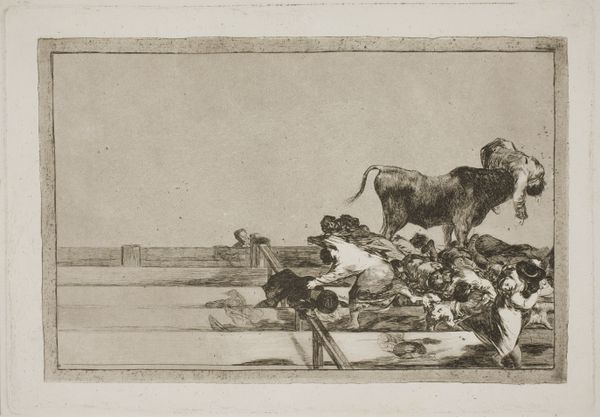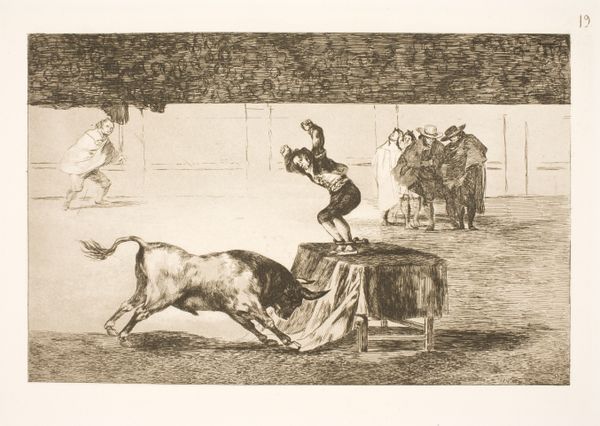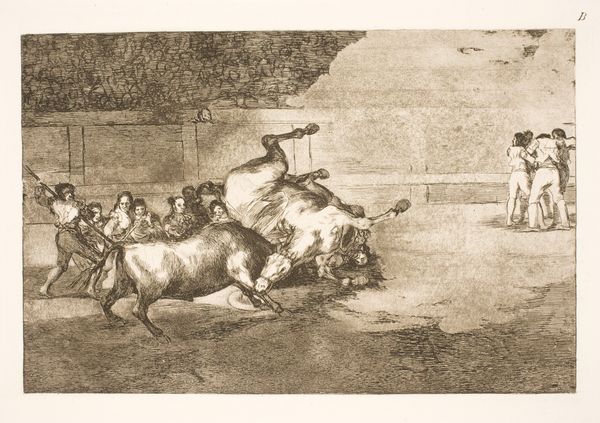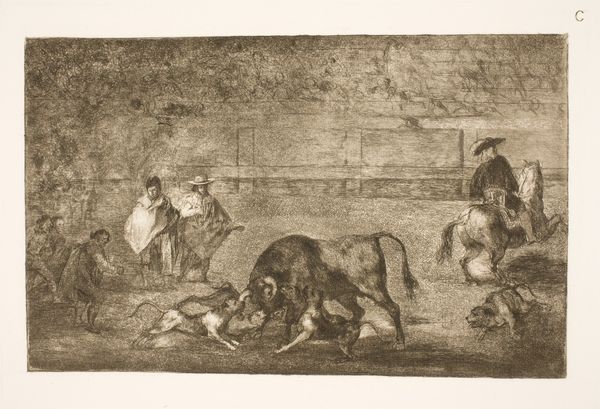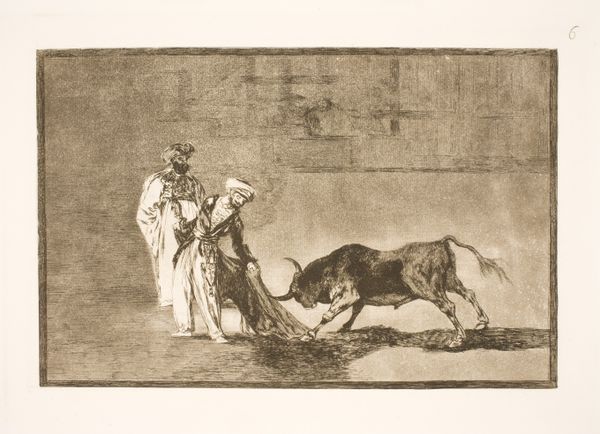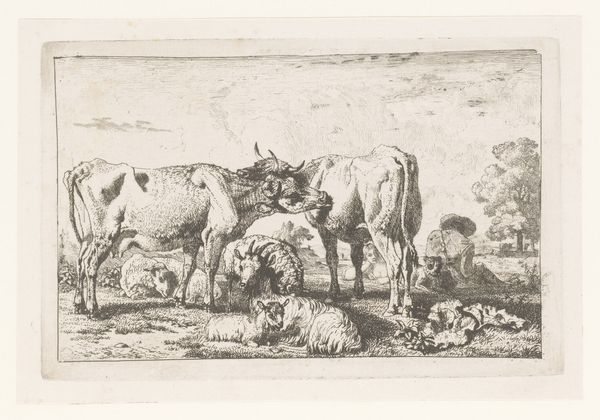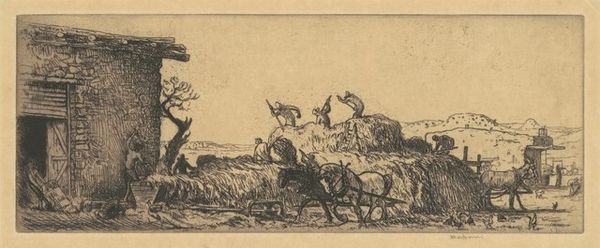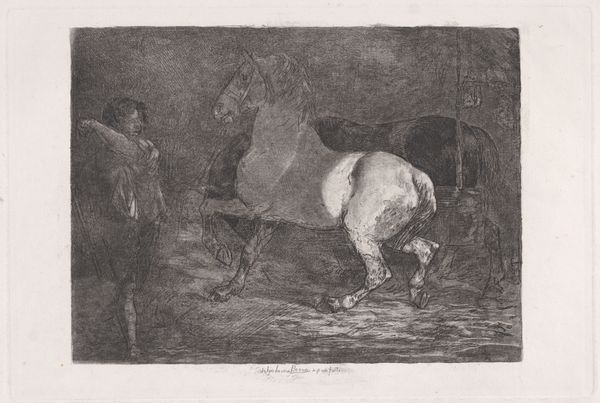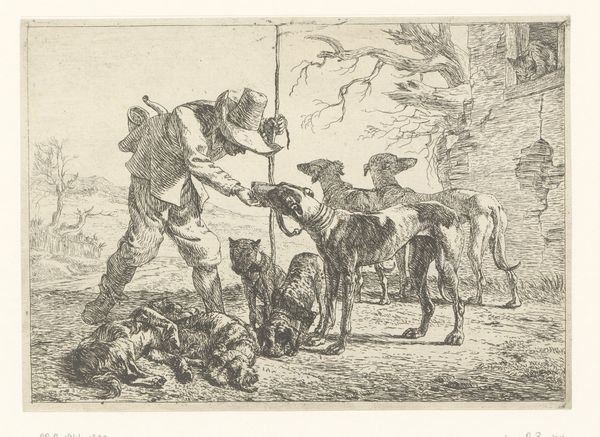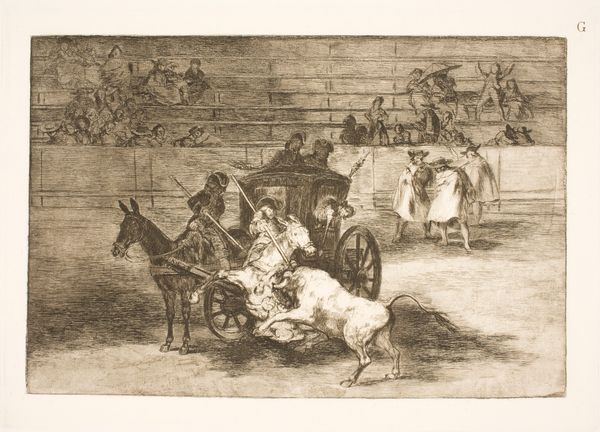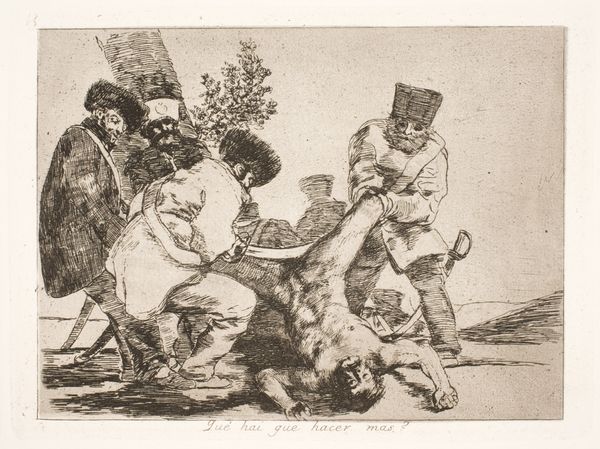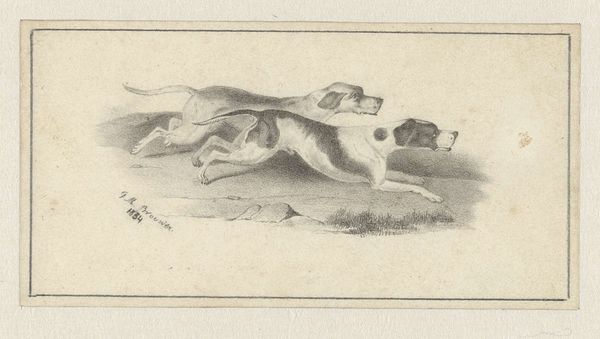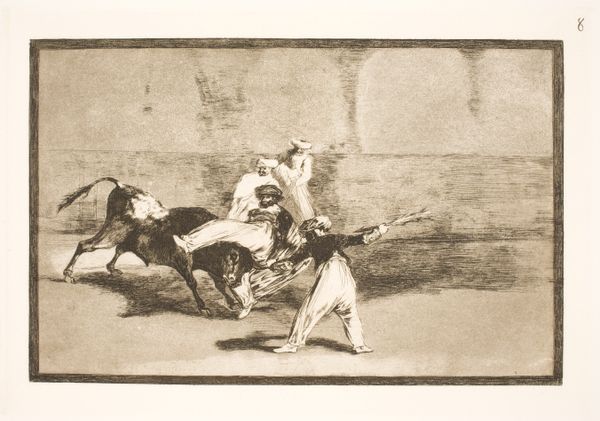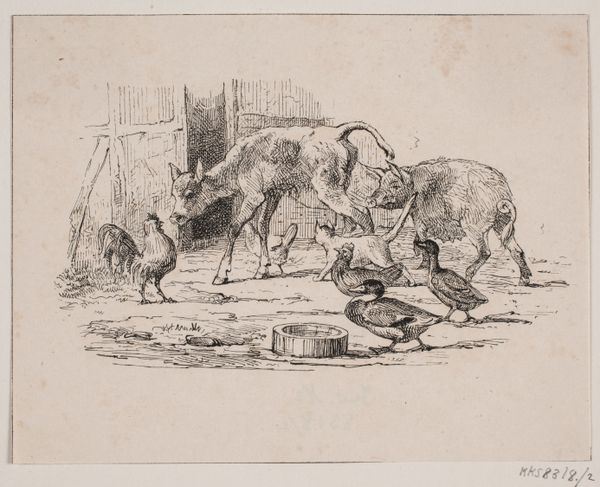
Frygtelige begivenheder på de forreste rækker i arenaen i Madrid og borgmesteren i Torrejon's død 1815 - 1816
0:00
0:00
print, etching, engraving
#
narrative-art
# print
#
etching
#
figuration
#
romanticism
#
line
#
history-painting
#
engraving
Dimensions: 246 mm (height) x 355 mm (width) (plademaal)
Curator: Looking at this print, it's immediately unsettling. The scene is chaotic, brutal. Editor: Indeed. This etching and engraving, made by Francisco de Goya around 1815-1816, is titled "Frygtelige begivenheder på de forreste rækker i arenaen i Madrid og borgmesteren i Torrejon's død" which translates to "Terrible Events in the Front Rows of the Arena in Madrid and the Death of the Mayor of Torrejon". Curator: You can feel the rough texture of the etching, the very directness of the line work conveying a raw, immediate energy. I'm thinking about Goya’s access to materials, the socioeconomic realities that would dictate the distribution of his prints, his workshop's labour. This wasn't painting for the elite, it was printmaking with a wider reach, allowing a far greater commentary on society at the time. Editor: Precisely. It's difficult to ignore the potent symbolism and political weight. Goya produced this image within the tumultuous years of the Peninsular War and the subsequent restoration of the Bourbon monarchy. We must consider how Goya positions this event within the discourse on power, violence, and spectatorship during that politically unstable period. The dead Mayor becomes symbolic of political disorder. Curator: Considering Romanticism, with its fixation on the grotesque and the sublime, this absolutely resonates. The material rendering amplifies the horrific reality of such a scene – not beautified, but stark and real. You see it in the frantic etching. Editor: Exactly. Look how the print implicates the viewer. Are we horrified observers, or are we complicit, finding entertainment in another's suffering? These bullfights were public events, political events. And the artwork captures that atmosphere. Curator: Absolutely. It really forces us to confront some tough questions. Beyond art-historical discourse, think of Goya’s deliberate technical choices when he's mass-producing something so loaded with horrific imagery; those rough lines emphasize the lack of romanticisation. It emphasizes its impact. Editor: It makes you really consider the purpose of art, especially art intended for widespread distribution in a fractured, post-revolutionary society. Curator: Definitely given me a lot to think about with the choice of material and wider distribution. Editor: Me too – It makes you ponder the continuing presence of violent imagery in public discourse.
Comments
No comments
Be the first to comment and join the conversation on the ultimate creative platform.
